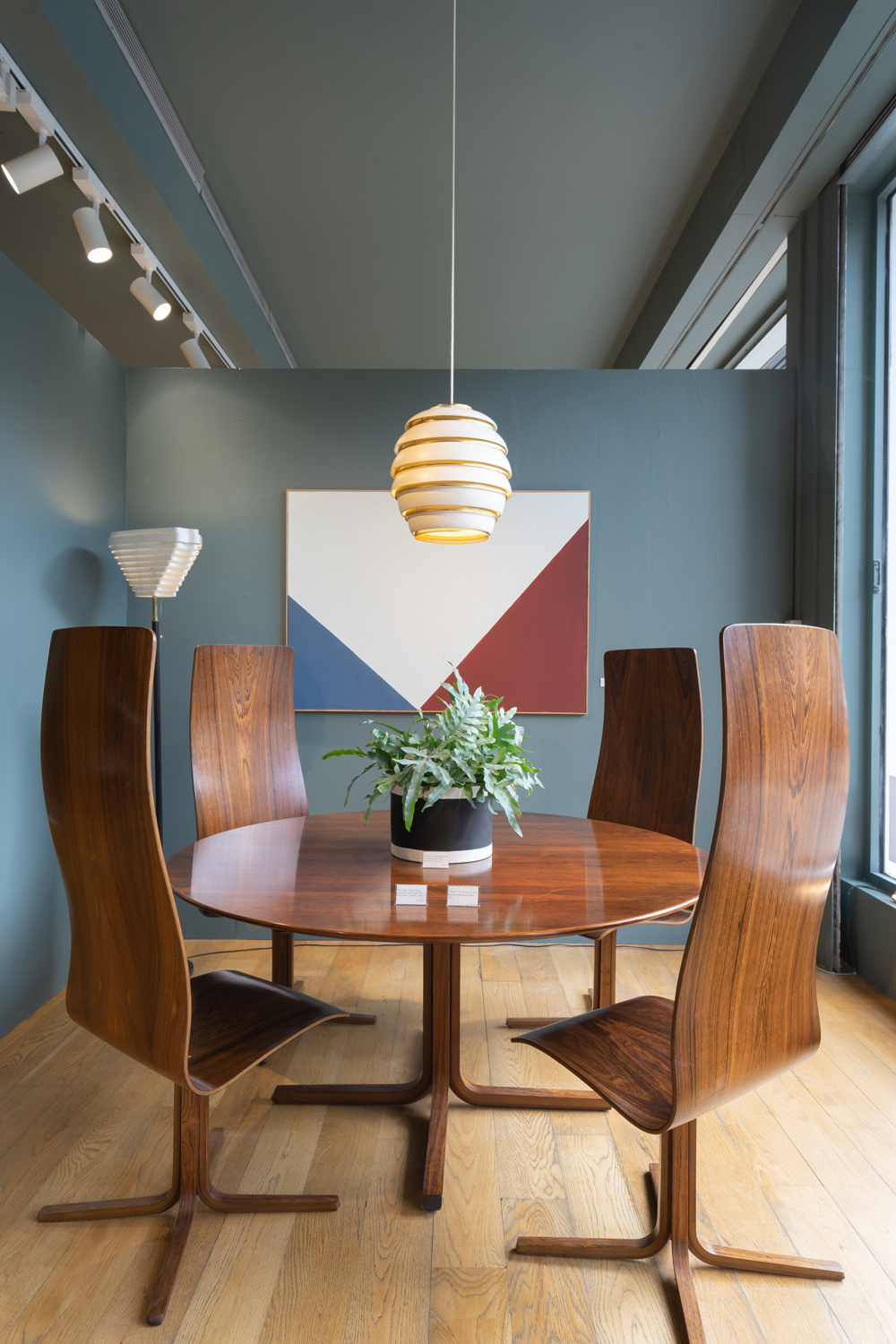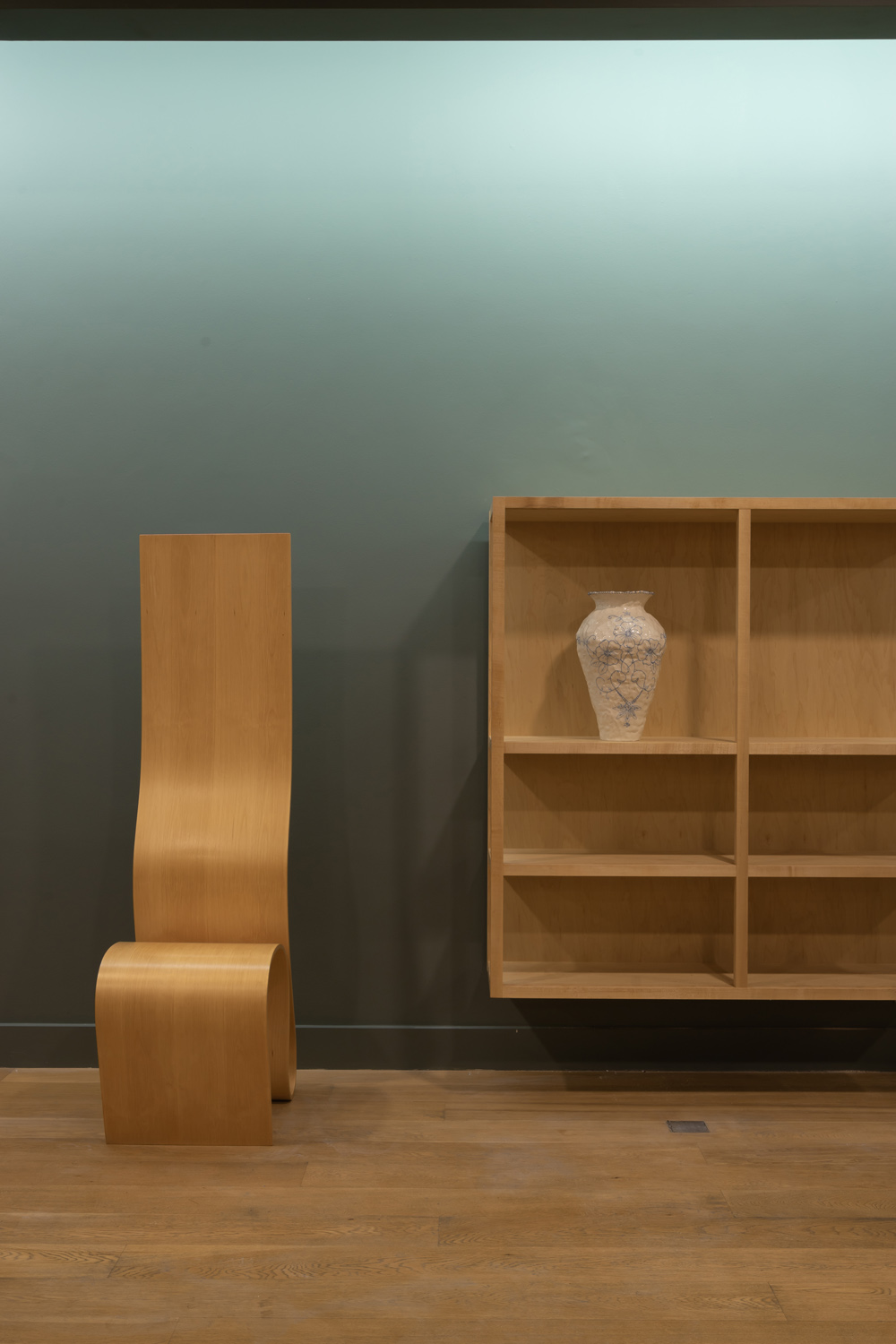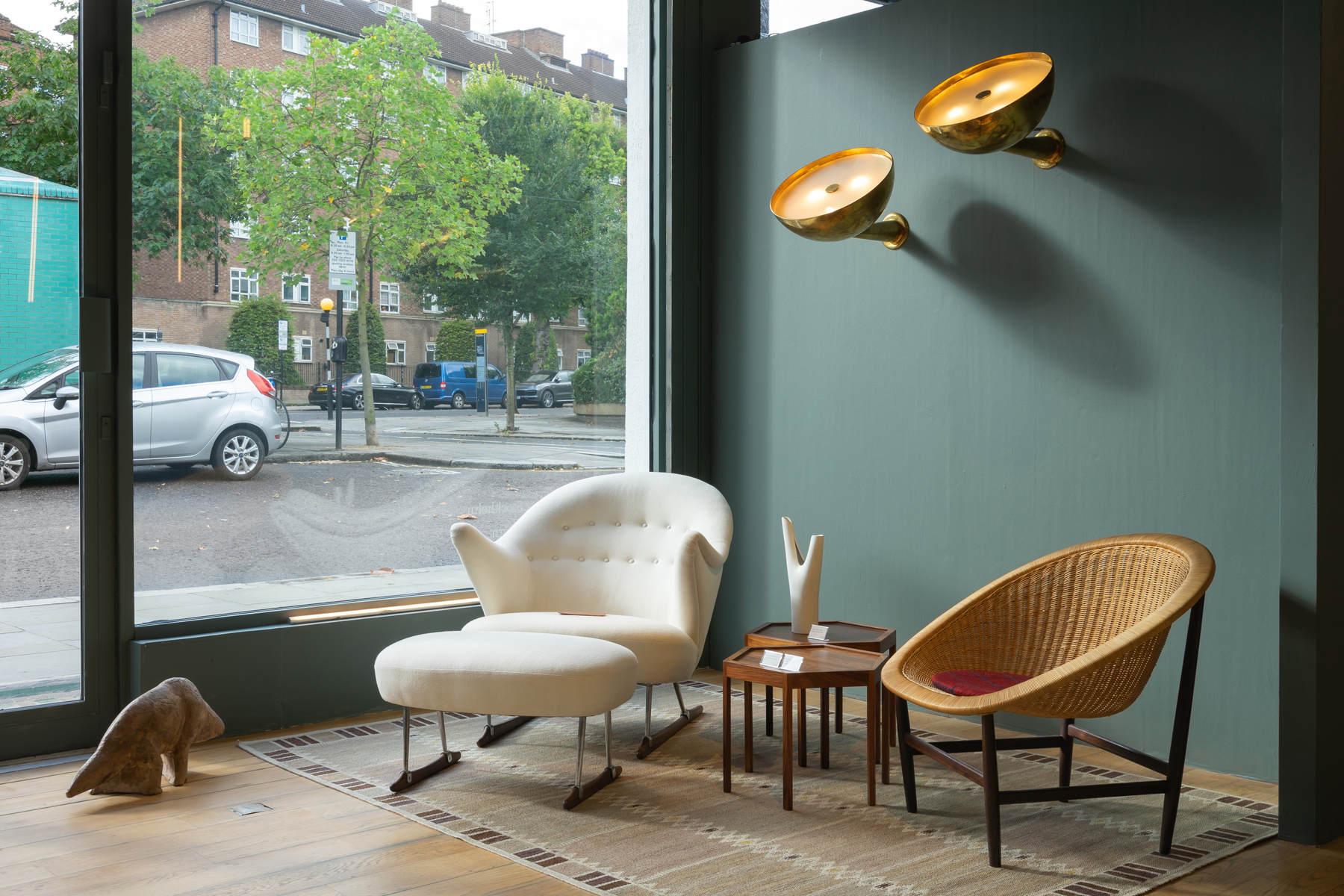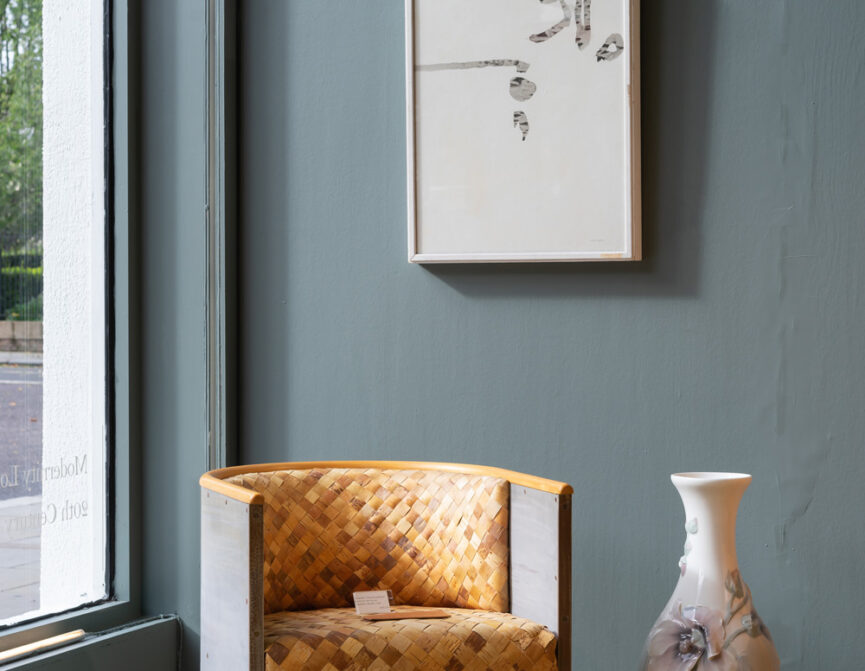UK Director, Sebastien Holt, discusses Modernity’s London showroom, his love for Scandinavian furniture and his most coveted pieces.
Standing on the corner of Westbourne Grove and Colville Road sits Modernity – a space filled with some of the finest pieces of Scandinavian design from the last century. It’s a rainy Monday morning and the gallery isn’t open yet, but that doesn’t stop every passer-by from glancing in, their curiosity piqued. And yet, to begin with, Notting Hill wasn’t even on their radar for setting up shop, confesses Sebastien Holt, Modernity’s UK Director. “We started looking at places generally in Mayfair and Marylebone – we didn’t even think about Notting Hill. But then we came across this place in April and we decided to try out west London.”
The Notting Hill gallery – recently expanded to include the basement space – has been open since mid-August this year and it’s a decision that has paid dividends. “A lot of our clients live around this area, so it makes sense. Our market is a bit younger and creative and it’s more casual and playful in Notting Hill, which is our style, rather than Mayfair where it’s a bit more serious.” Though Mayfair remains firmly on the radar via Frieze’s NO. 9 Cork Street – a newly launched hub for art galleries in Mayfair showcasing some of Modernity’s rarest pieces.


Modernity is the brainchild of Scottish-born Andrew Duncanson and his Swedish husband Isaac Pineus. Driven by his love of Scandinavian craftmanship, design retailer Andrew took the leap and moved from Scotland to Sweden, establishing the Modernity Gallery in Stockholm in 1998. An opportunity to transform his hobby of collecting vintage designs into a business, Modernity quickly grew to become a recognised force in the world of collectible furniture, now with design fairs across Europe and in New York. Sebastien picked up the reins in London just two years ago after a year-long industrial design internship with the duo in their flagship gallery, in the heart of central Stockholm’s design district. Despite his tender age – just 25 years old – he exudes the quiet confidence of someone who’s been in the role for decades.
With walls daubed in a cosseting inky blue, the space brings together the very best of Nordic furniture and jewellery by the likes of Niels Vodder, Finn Juhl and Hans Wegner. At the intersection of some of Notting Hill’s most dynamic thoroughfares and with wraparound windows, the Modernity Gallery is a stage, the pieces always on show. Sebastien credits Charles Mellersh Design Studio for the total redesign of the space, with Mellersh and his team overseeing the layout, furniture placement and the paint colour so prevalent throughout. “We were struggling to know what to paint the space in and he came up with the idea of using this greyish blue-green, which really works and helps to lower the ceilings.”



Alongside Mellersh’s input, Holt’s design background came into play during the fit-out. “We took the floor plans of the building and placed walls with segments that create cosy zones. And then a general rule is that you would always stick to three different tones per area and the same kind of wood tones, so you wouldn’t have too much going on. That’s the ethos we follow.” He points to the blue Arne Vodder sideboard and how it seamlessly flows into a blue Harry Booström painting. Their goal, he tells us, is to create relaxing vistas. “And to create places that people feel like they can just move into. It’s a shame when a piece is just sat on its own on a plinth and doesn’t look useable or liveable. The plan is to show what your home could look like; living with modern design.”
It’s clear that Sebastien adores the pieces on display, taking immense pride in the flow of the space. He guides us through very rare, early works by some of the first Scandinavian cabinet makers, pointing to his favourite pieces. One he keeps coming back to is the ‘Flora’ cabinet by Josef Frank, admired not just for its unique beauty, but also for the rich history that surrounds it. Originally designed in 1937 for a professor of botany at Uppsala University to house his collection of butterflies and beetles, Frank hand-applied pages of a book to its surface, imparting a beautiful patina. Portraying incredible craftmanship, it’s no surprise that it’s a firm favourite amongst clients and can fetch up to £114,000. “It always works wherever you place it. It catches people.”
Sebastian muses over other coveted items; a 1950s shelving system by the experimental Bruno Mathsson which merges steel and plywood and retails for £14,000 and an intricate rug woven by Märta Måås-Fjetterström from her studio in Båstad, Sweden in the 1930s. The rug was crafted by Märta herself, prior to her expansion of the studio, and sells for £15,000. Not to be missed are Paavo Tynell’s many eye-catching light structures.
We want to create places that people feel like they can just move into. It’s a shame when a piece is just sat on its own on a plinth and doesn’t look useable or liveable. The plan is to show what your home could look like; living with modern design.
- Sebastien Holt


Perhaps most notable is his ‘Snowflake’ chandelier, a complex and evocative light that sells for a staggering £250,000. With intricate, hand-crafted mesh snowflakes delicately cascading from brass rods fitted into a perforated brass base, it’s pieces like these that make it easy to understand why Tynell was nicknamed “the man who illuminated Finland”. Tynell went on to light churches across the country and even reached further afield with designs for public spaces such as the UN building in New York. The ‘Snowflake’ is a piece in great demand but sourcing it is no easy feat. “We had one in Cavendish Square which sold within two months to an American collector. Since then, we’ve had three more clients looking for them and no luck finding one.” And, unsurprisingly, it’s a piece which is equally as hard to part with as it is to acquire. “In Cavendish Square, the room came alive with it. All the snowflakes would individually create a shadow on the ceiling and it was really quite mesmerising to actually work next to something of that stature. It was awful to say goodbye to.”
Sebastien understands the deep attachment his customers form with certain pieces. A collector since childhood, he recalls perusing galleries and museums with his parents and picking up small pieces of art or ceramics as memorabilia. But it was his travels that truly ignited his love for design. “I was buying a piece of art every time I visited a different country, so I had a memory that wasn’t just a photo or map, but an actual physical piece of art from that area. I built up a random collection of unfamous pieces.”

In Stockholm during his placement year, he spent time in the warehouse and while being guided through the restoration process, he was exposed to some of the greatest Nordic works of the 20th century. For Sebastien, though, it was the provenance of the pieces which really excited him. “I appreciated the forms and processes, but when you hear the stories behind how they came about, it’s extremely interesting.” He even credits the Scandinavians for his renewed outlook on life. “I just absolutely love the way the Swedes view the world; they always seem very positive. I immediately fell in love with the culture of the place, it almost feels like one step ahead of us.” His advice for novice collectors? “Buy what you love. If it’s a really special piece that you just can’t live without, then you should get it and not try and think about how it will work; you can really mix it up.”




